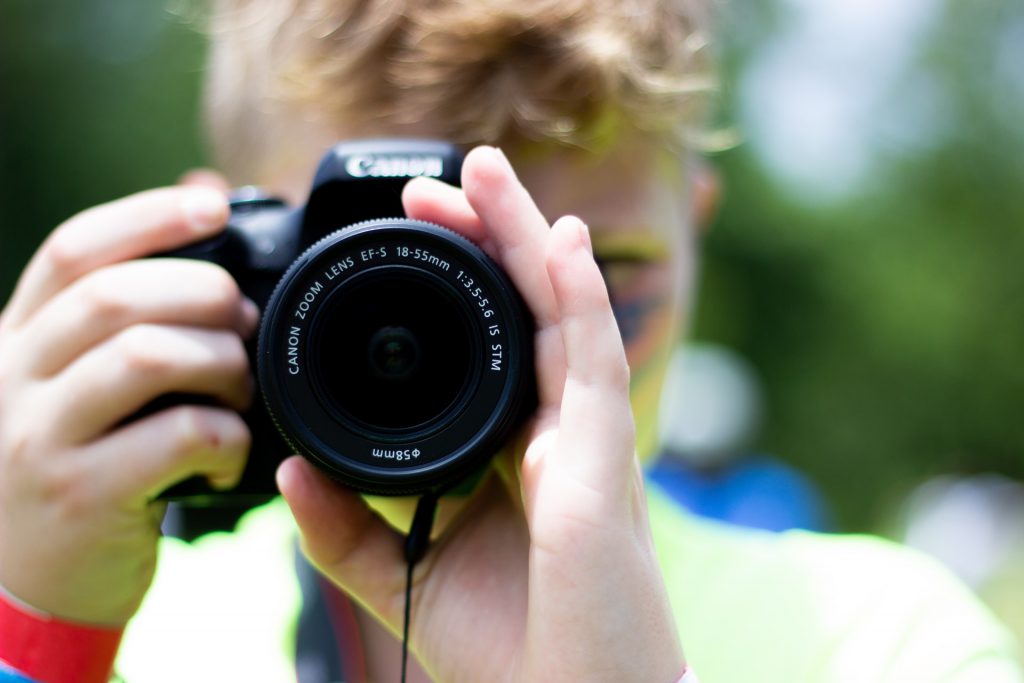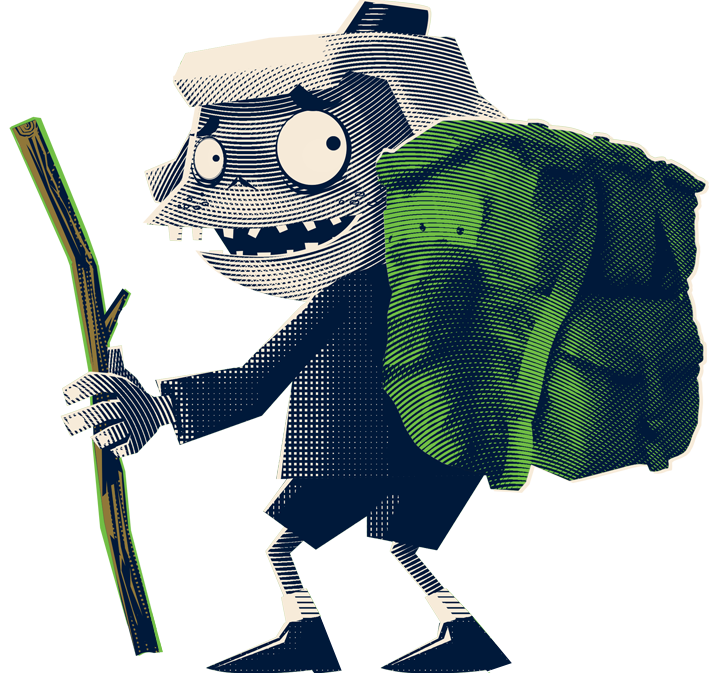Middle Grade Books for Aspiring Screenwriters and Filmmakers
[Photo by Jeremiah Lawrence on Unsplash]
When the end credits of a movie roll, it’s easy to walk out of the theater, exit the streaming service or app, or eject the blu-ray/DVD. It’s rare for viewers to sit through end credits or even take note of the names in the earlier part of the film, but in recent years there’s been a trend with including entertaining credits, especially end ones, to keep audiences occupied. This is most relevant in big-budget movies like the MCU films (no wonder, as audiences are expected to sit through the credits for a final after credits scene) and animated films that utilize the credits to play around with the movie’s art style, and kudos for them. These credits are a small step towards casual viewers noting the names of all the people who have contributed their time, skills, and efforts to the making of the movie.
January 5th is National Screenwriters Day, created to celebrate and honor the work of all the screenwriters who can get left in the shadows of the directors. Yes, the director is obviously an important and major figure in bringing a film to life, but those who script the film are just as crucial in the movie making process. This list is for all those aspiring screenwriters and other filmmakers, from editors to camera operators to producers, who have big plans for the future and the now. May these middle grade reads inspire you to pursue your dreams and continue creating movies that make you happy.
How to Make a Movie in 10 Easy Lessons by Robert Blofield
The amazing thing about filmmaking nowadays is that you don’t need a big-budget Hollywood set to create imaginative, clever works that you can be proud of. You don’t even need a special camera. Sometimes all you need is a smartphone or a tablet, and you’re ready to roll.
Blofield understands the digital age of filmmaking, and in How to Make a Movie in 10 Easy Lessons he outlines, you guessed it, ten lessons for all sorts of filmmakers from editors and writers to directors and cinematographers. He keeps things accessible by focusing on low-budget concepts and excluding overwhelming jargon. The lessons are digestible, covering everything from the importance of lighting to utilizing different shots, and you’ll learn helpful information like what defines a wide angle or long shot, tips for script writing, and how to prepare in pre-production and how to edit, promote, and even show your film in post-production. Whether you’re looking to shoot comedies, documentaries, romances, or action films, Blofield’s got you covered.
For those budding film critics or those who want to study more films before jumping into writing their own, try these other books published by Walter Foster Jr.: 101 Movies to See Before You Grow Up by Suzette Valle and 101 TV Shows to See Before You Grow Up by Samantha Chagollan.
Buy the book:
Amazon | Barnes & Noble | Indiebound | Books A Million
Spark and the League of Ursus by Robert Repino
Looking for characters your age that share your interest in creating films? The siblings Loretta and Matthew from Spark and the League of Ursus are young filmmakers with a rather successful YouTube channel. Although the story mainly follows their sentient teddy bears, Spark and Sir Reginald, and the battle the bears and their toy friends face against a dimension hopping (and rather terrifying) monster, the siblings spend their free time writing and directing films with their friends. Using their collective toys, the group makes mini productions that not only gain them recognition online, but at smaller film festivals as well. If you’re looking for inspiring new ideas, motivation to pursue your own film creation, or a spooky story that mixes Toy Story with Stranger Things, then this book’s the perfect pick.
Keep an eye out for the sequel, Spark and the Grand Sleuth, coming out March 23 of this year for more Loretta and Matthew filmmaking content! While you wait, check out these downloadable Spark activities, including storyboarding, camera shot details, and cinema themed BINGO.
Buy the book:
Amazon | Barnes & Noble | Indiebound | Bookshop | Books A Million
Nick and Tesla’s Special Effects Spectacular by “Science Bob” Pflugfelder and Steve Hockensmith
This may be the fifth book in the Nick and Tesla series, but aspiring filmmakers will want to jump right in with this fifth installment. Featuring another sibling duo, this story follows Nick and Tesla, but instead of creating their own films, they’re amateur inventors with an eye for mystery solving. You’ll get a background look into movie making as the siblings use their detection and inventive gifts to crack a case surrounding a Hollywood movie filming in town. The coolest part is that the book includes instructions on how to create all the film and effects-related DIY projects—like camera gear, make-up magic, and stunt dummies—that Nick and Tesla utilize throughout the story.
There is an overarching narrative throughout the Nick and Tesla series focusing on a larger mystery surrounding their parents and the growth of individual characters, so if you’re also a fan of mystery and DIY science projects, try starting from the first book and working your way to this later one.
Buy the book:
Amazon | Barnes & Noble | Indiebound | Bookshop | Books A Million
Who Was Charlie Chaplin? by Patricia Brennan Demuth and illustrated by Gregory Copeland
The history of any industry is important to study if you want to take part in it. You’ll want to know what worked for specific audiences at certain times depending on the culture and resources of that time. This will allow you, as a filmmaker, to adopt styles of the past greats, learn to adjust to modern trends, and find your original voice. If you have a favorite screenwriter, actor, director, even animator, producer, or film composer, see if you can find a biography on them to learn more about what inspired their career in film. Don’t have any particular favorites? Grab Who Was Charlie Chaplin? for a rewind back to the days of silent film.
Considered one of the most important figures in the history of the film industry, Sir Charles Spencer Chaplin KBE (yes, he not only is a knight but carries an honour as well) was a comic actor best known for his portrayal of “The Tramp,” but beyond that he was also a director, writer, producer, editor, and even music composer. You’ll learn about his 75+ year career from his time on the London stage to his popular silent films in America to his later films after settling in Switzerland. You’ll also get a close look into how the individual views of a film creator like Chaplin can affect the reception of their films depending on the culture of the time and place.
If you buzz through this one, give another Who Was? film figure biography a try. Do you like suspense films? Try Who Was Alfred Hitchcock?. Are you a fan of Star Wars or Indiana Jones? Read Who Is George Lucas?. Want to meet the man behind some of the most famous films of recent times? Pick up Who Is Steven Spielberg?. Interested in puppetry, animation, or comics? Learn about the Muppets creator Jim Henson, the man behind Mickey Mouse Walt Disney, or the father of the Marvel movies Stan Lee.
Buy the book:
Amazon | Barnes & Noble | Indiebound | Bookshop | Books A Million
The Invention of Hugo Cabret by Brian Selznick
The first middle grade book to win the Caldecott Medal (usually reserved for picture books), The Invention of Hugo Cabret includes 284 pictures in its 500+ pages and is something of a combination between a flipbook or graphic novel and a novel. The story is a historical one based in 1930s France, following a young orphan Hugo and his running of the clock tower in a train station. What young screenwriters will mostly be interested in, however, is the narrative revolving around Georges Méliès, a real French filmmaker best known for his popularizing of major special effects still used today. In the book, you’ll read more about his film career like his 1902 Trip to the Moon, but you’ll also learn about his knack for toy making and interest in automata, a major motif in Hugo’s adventure and a useful skill that assisted in Méliès’ special effects career.
Buy the book:
Amazon | Barnes & Noble | Indiebound | Bookshop | Books A Million
Art of Over the Garden Wall by Sean Edgar and Patrick McHale
Similarly to biographies, “the making of” and “the art of” type books will allow you to learn what has worked and what hasn’t in the film industry as well as discover what is personally important to you in film. Look up your favorite movie or tv show and see if they have behind-the-scenes books that detail how the story came to life. If you’re not sure where to begin, try Art of Over the Garden Wall for a look into Cartoon Network’s 2D animated, cult classic miniseries.
Perfect for those interested in the TV industry or animated storytelling, this comprehensive book has almost 200 expansive pages jam-packed with concept art, character sheets, storyboards, episode breakdowns, background on world creation and set up, and even pitch details. You’ll not only get a good dose of humor and honesty from creator Patrick McHale on almost every page, but you’ll hear from art director Nick Cross and many others from background painters to creative directors to character designers. Flip through the preview images on Dark Horse’s site for an idea of the book’s scale, and know you’ll get a deep dive look into the work and passion that goes into animated television.
More a 3D animation fan? Start with The Art of Rise of the Guardians for a good look into character design, setting, and 3D animation in relation to storytelling. For those interested in stop motion, check out art books of any Laika film, starting with The Art of Kubo and the Two Strings for some insightful look into 3D printing, 8 foot tall puppets, and dioramas insight.
Buy the book:
Amazon | Barnes & Noble | Indiebound
Cinemaps by Andrew DeGraff and A.D. Jameson
For young filmmakers interested in analyzing the physical space of narratives, Cinemaps is a great place to start. Although this book isn’t geared specifically towards middle schoolers, DeGraff’s hand-painted maps and Jameson’s critical essays can be absorbed and enjoyed by any age. Each map tracks some of the most memorable films across various genres from King Kong and The Breakfast Club to Back to the Future and The Princess Bride with beautiful cartography and intricate detail, and Jameson’s experience as a film critic add enlightening insight into how the geography of a film plays into the pacing of a narrative, direction of the cinematography, and even the portrayal of a character.
Buy the book:
Amazon | Barnes & Noble | Indiebound | Bookshop | Books A Million

Gabrielle Bujak
Gabrielle likes a lot of things and dislikes very little. Retired ice cream cake decorator, occasional farmhand, and reminiscing library worker, she spent her childhood dreaming of fighting fires and her college days writing about Bong Joon-ho before he was cool. Now, she preaches the importance of dental hygiene; chats up books, movies, and comics via the Quirk blog; and legally climbs silos. Whether the legality of the silo climbing makes her more or less interesting is up for debate. Email [email protected] if you want to review our titles or feature our authors.











